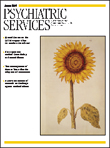Cognitive vulnerability refers to cognitive antecedents, beliefs, and patterns that make way for development and maintenance of psychological problems. Better insight into cognitive vulnerability could lead to better prevention, understanding, and treatment of mental illness. Cognitive Vulnerability to Emotional Disorders attempts to synthesize the most recent information in this promising field.
Editors Lauren Alloy and John Riskind take on the task of compiling essays in the burgeoning area of cognitive vulnerability in emotional disorders. The introduction provides information on theory and research design. The remainder of the book is organized into three parts: mood, anxiety, and eating disorders. Each part contains chapters on specific disorders as well as an integrative chapter written by a leading expert in the field. The book is structured so that readers can enjoy the work as a whole or focus on their area of interest. This book will appeal to readers who wish to have a greater understanding of the underlying thoughts preceding and promoting psychological disorders.
Alloy and Riskind begin the book excellently by introducing the concept of cognitive vulnerability including a discussion of distal and proximal cognitive antecedents, the cognitive vulnerability-stress paradigm, and a theoretical framework of cognitive vulnerability. The remainder of the chapter deals with issues in research theory and design.
Part I begins with a chapter on the Cognitive Vulnerability to Depression Project providing a model of how research is being done in this area. Chapters on depression, bipolar, and suicide follow. Much discussion is given to the hopelessness theory and Beck's theory of depression and stress-diathesis paradigm. Read as a whole, Part I can at times be redundant, because the chapters are written to stand alone.
Part II begins with a chapter describing the "looming maladaptive style," which focuses on dynamic danger content and how this style may relate to specific anxiety disorders. This chapter also presents information from the Cognitive Vulnerability to Anxiety Project. Chapters on panic, obsessive-compulsive disorder (OCD), social anxiety, and posttraumatic stress disorder (PTSD) follow. I found the chapters on the anxiety disorders to be the most interesting in the volume because they were the richest in theory. Some of the topics covered include elevated responsibility and thought-action fusion in OCD; attention, memory, judgment, and interpretation biases in social anxiety; as well as rigid world and self schemas, and maladaptive coping styles in PTSD.
In Part III, the chapter on bulimia gives great attention to resolving the perfection paradox, that is if the individual's goal is body perfection, why does he or she binge and undermine the goal? The authors offer a three-factor model combining high perfectionism, body dissatisfaction, and low self-efficacy. They also discuss binging as an attempt to regulate aversive emotion and self-awareness. The anorexia and integrative chapters make it clear that there is a relative shortage of cognitive vulnerability research on anorexia.
Overall, I found Cognitive Vulnerability to Emotional Disorders to be a fascinating and thought-provoking experience that left me with many new ideas, insights, and questions.

